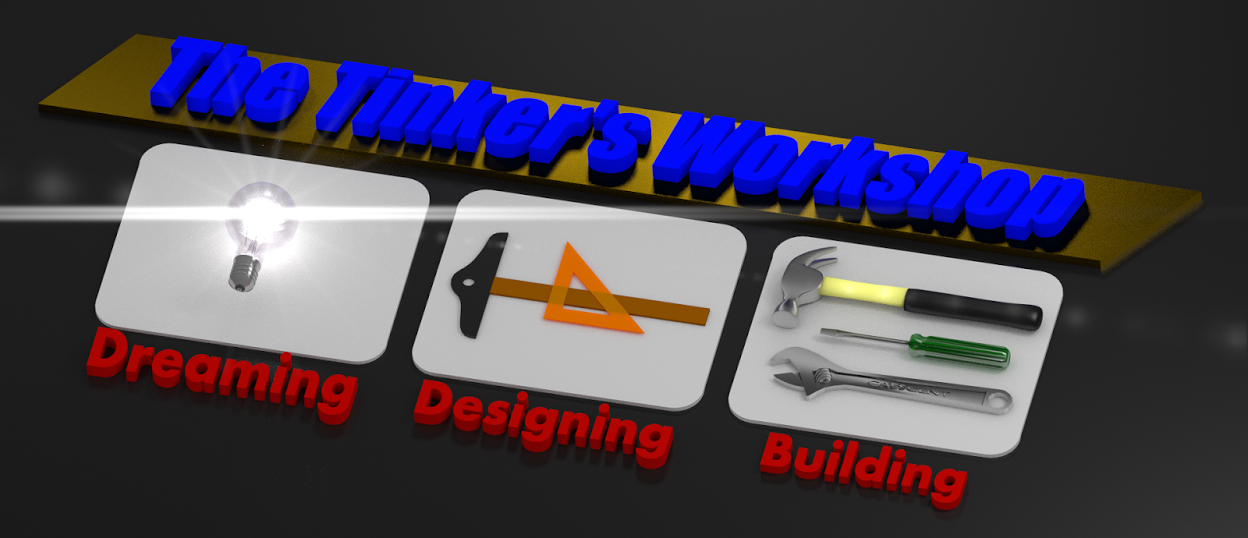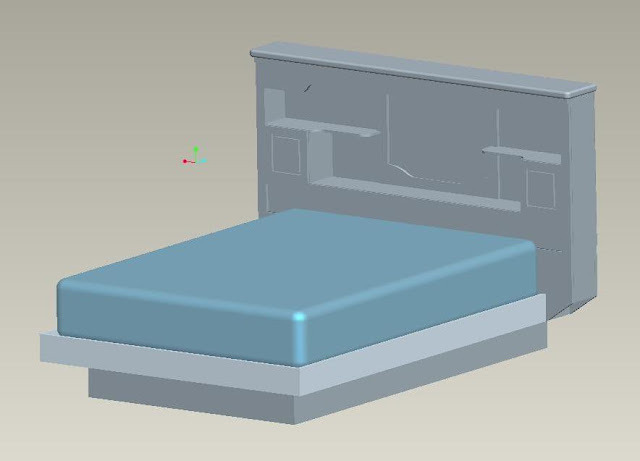It's been a busy couple of weeks here at the Tinker's Workshop. I thought it best to finally get a new post out on what has been happening and what is planned for the coming weeks. I have been busy with a large project here at home that has turned into a chain reaction of projects as most people know can happen. For some time now I have been wanting to replace the carpet in my bedroom and repaint the room at the same time. This in turn called for the removal of a well cared for king size water bed which because of its weight had messed up the position of the closet in the bedroom. The bed weighed close to 2000 pounds and had managed to shift the closet away from the back wall of the bedroom. This I corrected with some help from a close friend and have now painted the bedroom and am waiting for the new carpet to be installed. So now on to the fun part of this project.
The current project I am now working on is to build a new bed to replace the water bed. I no longer want that much weight on the floor and so I've decided to build a queen sized platform bed instead of the over sized, overweight king sized water bed. This will be lighter on the floor and make more room in the bedroom too. The headboard of the water bed is solid oak and is to nice to discard and so that is where I started this project.
With this in mind I had to design a new platform bed using the king sized headboard yet still reduce the size of the new platform bed to a queen. This is what I came up with.
The new platform bed will use a setup very similar to the water bed as it will have a base that the mattress and mattress deck will sit on. A couple of things had to be addressed here in this project as the headboard is set up for a king sized bed and the mattress is a queen. Also the headboard could not sit directly on the same platform as the mattress as it would be to low to be usable. I designed a headboard riser that would straddle the platform so that the width difference from a queen to a king sized bed could be used along with raising up the headboard to a correct height.
The headboard riser will be made from oak along with the mattress rail (shown in gray) that will rap the deck and deck frame. The deck frame base will be made out of 2 x 8's and the deck frame out of 2 x 4's. Both made from pine. The deck is half inch plywood. All of the parts for the new bed now have been cut and being as photos of a pile of wood is not that interesting I will hold off with taking more photos of the project until it starts taking shape.
I was also concerned with the height of the bed mattress once the bed was completed as I thought it might be to low. This turned out to be no big problem as the mattress is 12 inches thick and the total height will be 24 inches tall. Very good news for the project. I will post further photos in the coming weeks as progress is made on this project.



